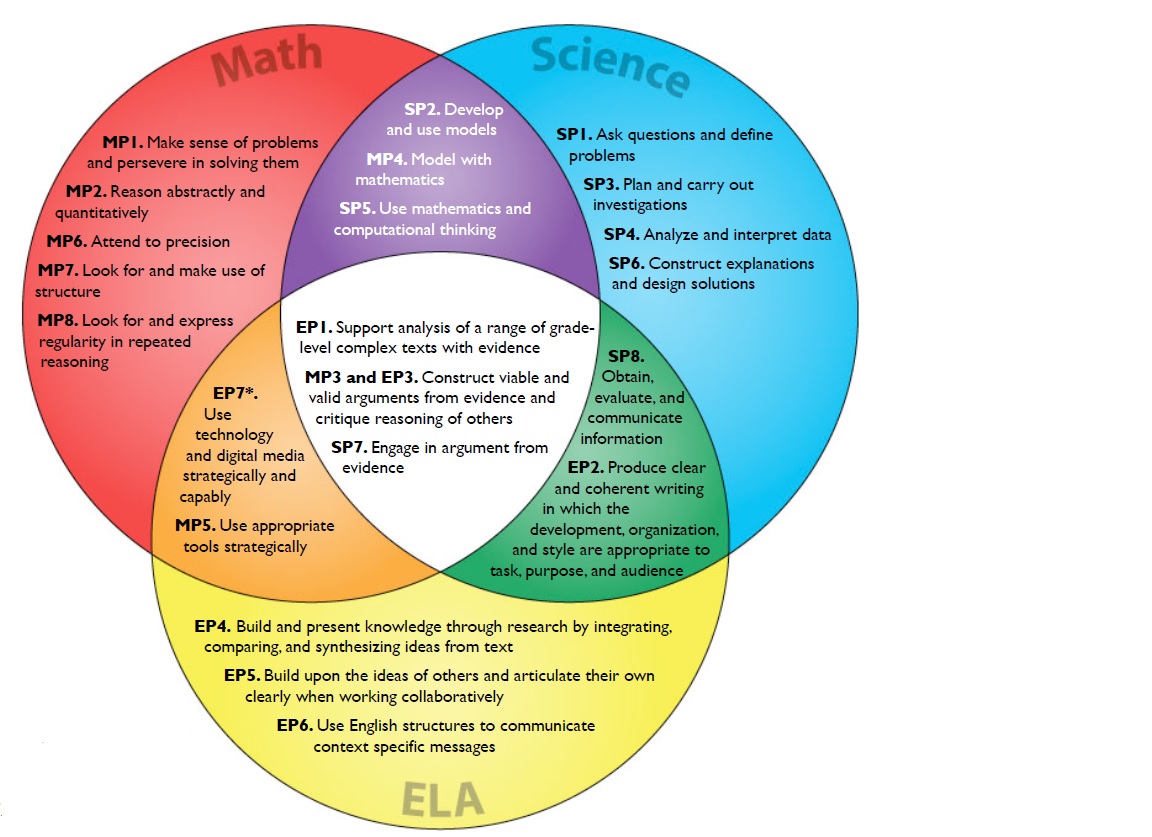Intro Blog: Science Across the Elementary Grades and Why It’s so Important

Science in the elementary grades has taken a back seat to mathematics and English language arts for decades, and its place on the back burner was reinforced by the No Child Left Behind Act with its emphasis on accountability for student achievement in mathematics and ELA. The consequences of low student achievement put pressure on elementary principals and district administrators to imply and occasionally explicitly require elementary teachers to disregard science and focus their instructional time on mathematics and ELA. For under-performing schools and districts, the pressure to overlook science was even greater. Data from the Center on Education Policy’s 2004 national survey of school districts show that 22 percent of districts had reduced instructional time in science in order to make more time for reading and/or math (2005).
National data provide consistent evidence of the minimal time on science in comparison to math and ELA. According to data from the most recent National Survey of Science and Mathematics Education survey, Horizon Research (2018) reports that only 17 percent of grades K–3 classes and 35 percent of grades 4–6 classes receive science instruction all or most days, every week of the school year. Many elementary classes receive science instruction only a few days a week during some weeks of the year. Anecdotally, we know things are worse than this. For example, an informal survey in a New England school found that 45% of students in PreK-grade 2 and 35% of students in grades 3-5 receive less than 9 hours of science instruction per year, and this school is not an anomaly.
Considering the relative absence of science in elementary classrooms, it’s reasonable to ask if it matters. What’s so important about elementary science, and what are we risking by not making it available to students? There are several reasons:
First, all students need access to high quality science experiences because their future careers will require it. Society’s recognition of the importance of the STEM disciplines to our nation’s economic future is evident in national policy and summarized well in the Federal STEM Education Strategic Plan (2018). Youth that understand the practices and possibilities of science will have a breadth of career options. Moreover, research suggests that about half of 8th grade students who have an interest in a science career go on to pursue science work (Tai, 2006), and at the same time, students’ interest in science drops significantly when they reach middle school. The more students whose interest we can capture and ignite in the elementary grades, the more who will remain interested, will pursue more science learning, and enter STEM careers.
Second, science for all children in the elementary grades is an equity issue. When schools don’t give students science experiences, the only children who have access to science are the ones whose families have the means to provide it – trips to science museums, aquaria, planetariums, after school clubs, etc. By denying access to science for students from low-income families, we set them on a path that will bypass the careers and opportunities of the future.
Third, as of today, about 2/3 of our nation’s students attend schools with new science standards emphasizing the practices of science and engineering: critical thinking, communicating, problem-solving, and collaboration as much as key science and engineering concepts. These practices are the key abilities for understanding and functioning in the constantly evolving workforce and society, and mastering the practices and concepts that are emphasized in the new science standards begins in the elementary grades (Kastens & Levy, 2014). New knowledge and skills build on what students have already learned, and by ignoring science in the elementary grades we are sending children to middle school unprepared for the work they will be expected to be able to do. Moreover, girls, English learners, struggling learners, and other underrepresented groups will have an even harder time catching up, so falling further behind is more and more likely.
One approach to solving the no-time-for-science problem is to connect science learning to mathematics and/or English language arts, and as researchers and practitioners have investigated ways to do this the relationship between the practices of science and engineering, literacy and mathematics have become more obvious. In the EdWeek blog, Finding Overlap in the Common Math, Language Arts, and Science Standards (Loewus, 2014), the Venn diagram below was used to illustrate their congruence and overlap.

In this webinar, we will talk with researchers and teachers who have taken advantage of these connections in order to increase time for science and/or enhance student learning. They have taken different approaches, and the lessons they are learning shed light on the issues relating to equity as it applies to the contexts in which they work; the importance, challenges, and opportunities we all face when making similar attempts; and the implications of integration for student learning and teachers’ instruction.
Join us for the webinar and continuing discussion of this critical issue for elementary science and student learning.
References
Banilower, E. R. (2019). Understanding the big picture for science teacher education: The 2018 NSSME+ Center on Education Policy “NCLB: Narrowing the Curriculum? NCLB Policy Brief 3” (2005)
Committee on STEM Education of the National Science and Technology Council. (2018). Charting a course for success: America’s strategy for STEM education. Washington, DC.
Heitin, L. (2014, October 1). Finding Overlap in the Common Math, Language Arts, and Science Standards. Education Week's blog: Curriculum Matters.
Kastens, K. & Levy, A. J. (2014). For Science Standards, Begin at the Beginning. Education Week, 33(28).
Tai, R. H., Liu, C. Q., Maltese, A. V., & Fan, X. (2006). Planning early for careers in science. Science, 312(5777), 1143-1144